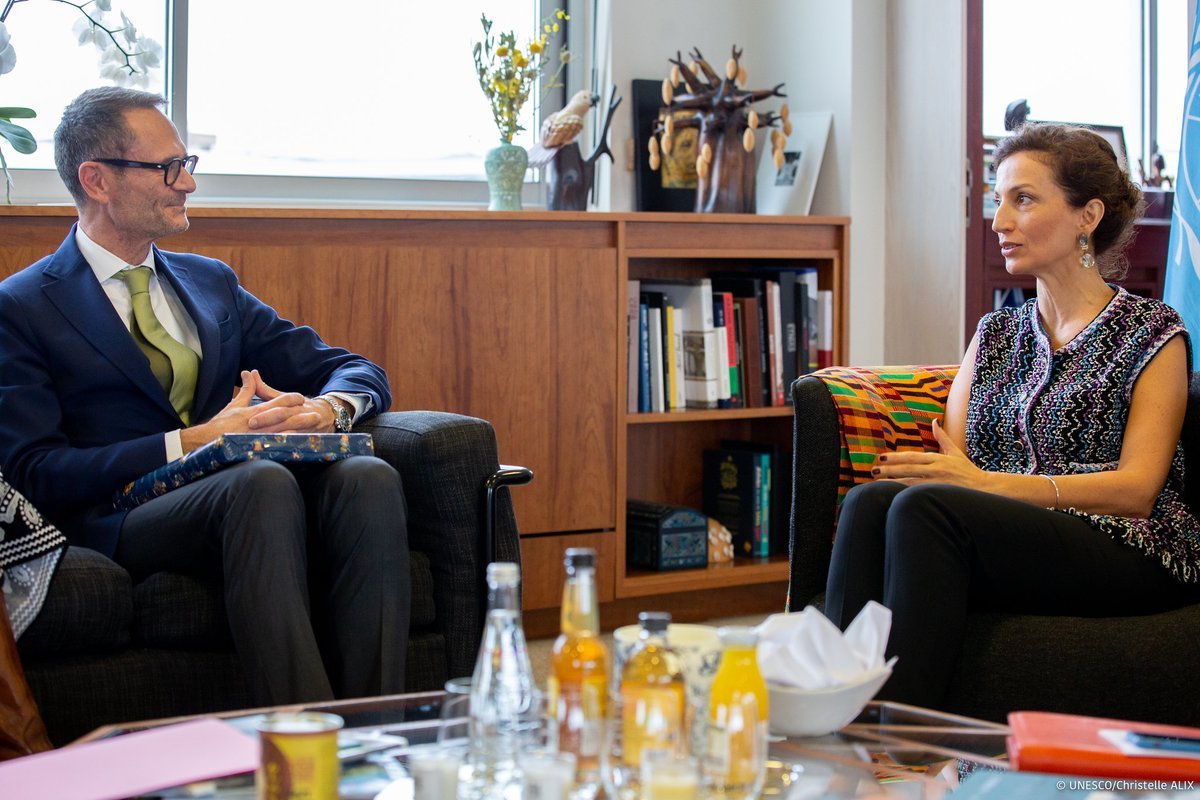PARIS, OCTOBER 20 – Following his appointment a month ago as Commander of the special unit of the Carabinieri for the protection of cultural heritage, Brigadier General Vincenzo Molinese had a “fruitful meeting” with UNESCO Director General Audrey Azouley. “We are great allies in the fight against trafficking in cultural property. The Carabinieri help us train the world’s police,” Azoulay commented on Twitter.
 Molinese, 55, took over in September from Brigadier General Roberto Riccardi. A native of Bari, the new commander of the Carabinieri for Cultural Heritage comes from the Anti-Mafia Investigative Directorate (Dia) where he was head of the department that deals with attacking illicit assets, combating money laundering and countering mafia infiltration in public procurement.
Molinese, 55, took over in September from Brigadier General Roberto Riccardi. A native of Bari, the new commander of the Carabinieri for Cultural Heritage comes from the Anti-Mafia Investigative Directorate (Dia) where he was head of the department that deals with attacking illicit assets, combating money laundering and countering mafia infiltration in public procurement.
He previously commanded the Carabinieri’s Higher Institute of Investigative Techniques and served in the ranks of the Special Operations Grouping (Ros) for 14 years. He served as provincial commander in Bari.
The Carabinieri special unit for the protection of cultural heritage was created in the late 1960s. The onslaught of crime in the area of national archaeological, artistic and historical heritage prompted the General Command of the Force, in consultation with the Ministry of Education, to assign a senior officer, two non-commissioned officers and a carabiniere to that department in March 1969.
On May 3, 1969, the “Comando Carabinieri Ministero Pubblica Istruzione – Nucleo Tutela Patrimonio Artistico” was established in direct coordination with the General Directorate of Antiquities and Fine Arts, and to that Command were addressed from the following October, all reports concerning the theft and illicit trade of works of art.
Today the Tpc Command has a museum at its disposal: the first exhibition of the Museum of Saved Art in the octagonal hall of the Baths of Diocletian in Rome was made possible by the activities of its ‘detectives’ with the premise that all the recovered objects on display will eventually be returned to its territory of origin. (@OnuItalia)
